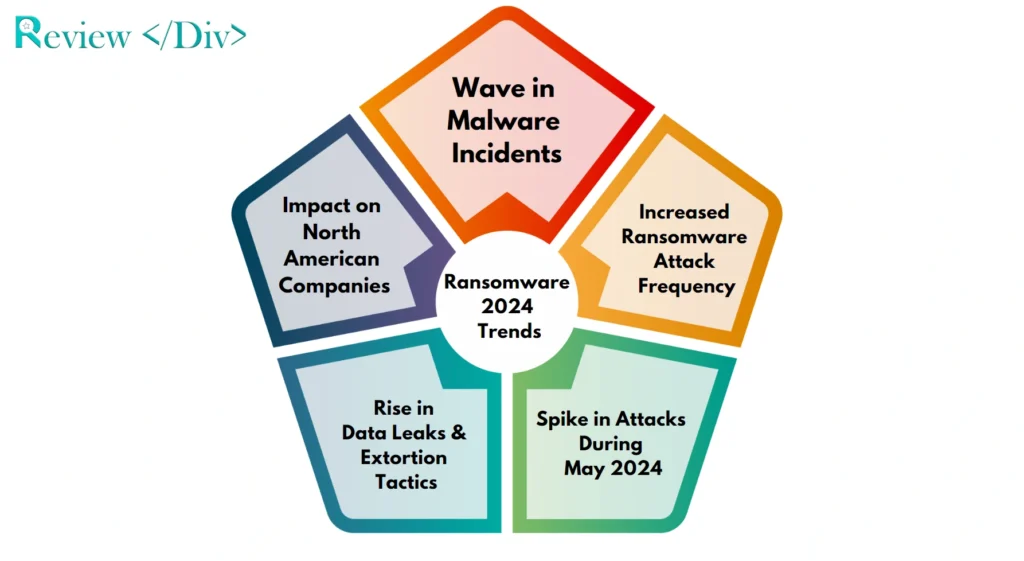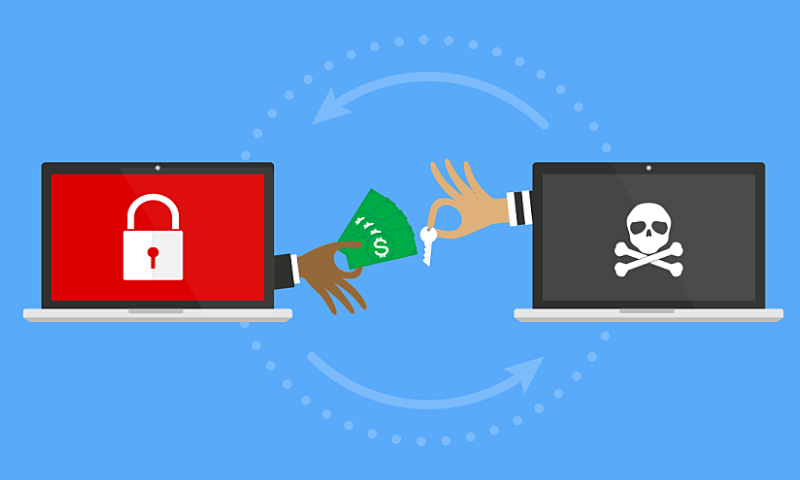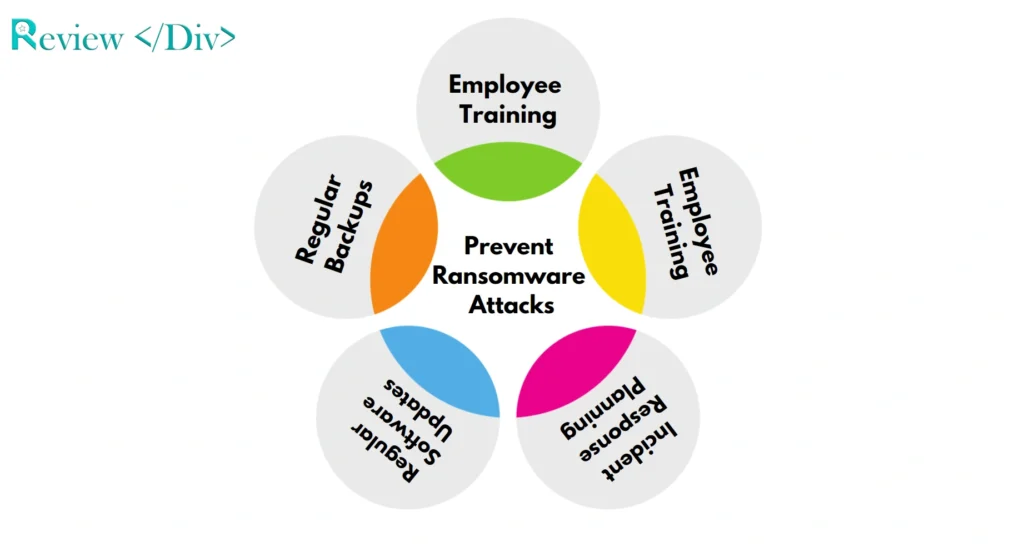Ransomware attacks have flooded in 2024, with a 13% increase over the past five years and an average cost per incident rising to $1.85 million. This trend is expected to worsen, with predictions that by 2031, a ransomware attack could occur every two seconds.
In 2023, ransomware attempts escalated to 7.6 trillion, a 20% rise from the previous year. The situation has worsened further in 2024, with the central/federal government sector experiencing a 68% attack rate across all industries.
What is Ransomware?
Ransomware is a type of malware designed to block access to a computer system or data, typically by encrypting files. The attackers then demand a ransom from the victim to restore access, usually payable in cryptocurrency to maintain anonymity.
The first known ransomware attack, known as the “AIDS Trojan” or “PC Cyborg,” occurred in 1989, but it is only in the last decade that ransomware has become a general and highly profitable criminal enterprise.
Ransomware Trends in 2024
The ransomware landscape in 2024 has been shaped by several significant trends that reflect the increasing complexity and industry of cyber criminals.
These trends have far-reaching importance for organizations worldwide, highlighting the growing nature of the threat and the urgent need for robust cybersecurity measures.

1. Wave in Malware Incidents
In 2023, SonicWall Capture Labs recorded a staggering 6.06 billion malware incidents, marking an 11% increase from the previous year. This rise underscores the growing prevalence of malicious software, with ransomware being a substantial component of this increase.
The data suggests that cybercriminals are continuously improving their capabilities, making it more challenging for organizations to defend against these threats.
2. Increased Ransomware Attack Frequency
The second half of 2023 witnessed a significant 27% rise in ransomware attacks compared to the first half of the year. This increase highlights the adaptability and persistence of cybercriminals, who are constantly refining their strategies to maximize their impact.
The frequency of attacks suggests that ransomware is becoming a more favored method among cybercriminals.
3. Spike in Attacks During May 2024
May 2024 marked the most significant spike in ransomware attacks due to the growing collaboration between ransomware groups and initial access brokers (IABs). These brokers specialize in gaining initial access to targeted networks, which they then sell to ransomware groups.
This partnership has proven highly effective, allowing ransomware operators to focus on the more attractive aspects of their operations, such as data encryption and extortion. The spike in attacks during this period highlights the increasing coordination among cybercriminals, making their operations more efficient and devastating.
4. Rise in Data Leaks and Extortion Tactics
One of the most alarming trends in 2024 has been the 74% increase in the number of companies whose data was leaked online.
Ransomware groups are increasingly adopting double and triple extortion tactics, where they not only encrypt the victim’s data but also threaten to release it publicly if the ransom is not paid.
In some cases, they extend these threats to third parties, such as the victim’s customers or partners, adding further pressure.
This shift towards more aggressive extortion methods indicates a growing cruelty among ransomware operators, who are willing to use any power they can to extract payments.
5. Extreme Impact on North American Companies
North American companies have taken the brunt of ransomware attacks in 2024, accounting for 54% of all posts on data leak sites (DLS). This figure represents more than double the number of North American companies targeted in 2022.
The disproportionate impact on this region could be attributed to the high concentration of lucrative targets, including large corporations and critical infrastructure.
The fact that North American companies are being targeted at such a high rate highlights the need for heightened cybersecurity attention in this region.
Ransomware Payments and Costs
The financial impact of ransomware attacks is staggering. In 2023 alone, victims paid over $1 billion to ransomware gangs, and these are just the payments that have been publicly disclosed.

The pressure tactics employed by these gangs have become increasingly severe, with a 75% increase in posts by gangs on data leak sites in 2023 compared to the previous year.
The average ransom payment has skyrocketed by 500% over the past year, with 63% of ransom demands exceeding $1 million, and 30% of demands surpassing $5 million.
This trend suggests that ransomware operators are becoming more aggressive in their search for large payouts. The average cost of recovering from a ransomware attack has also risen, reaching $2.73 million.
Ransomware by Industry
Different industries have experienced varying levels of impact from ransomware attacks in 2024. The central/federal government sector has been particularly hard hit, with a 68% attack rate, making it the most targeted industry.
Financial organizations have also been significantly affected, with roughly 65% reporting ransomware attacks. Manufacturing appeared as the most targeted sector in 2023, accounting for 25.66% of all ransomware attacks.
The sector also had the highest number of victims whose data was posted on social channels, with 27.75% of all such incidents. This highlights the increasing susceptibility of essential industries to ransomware threats.
Global Ransomware Attacks
Ransomware attacks have surged worldwide, with certain countries experiencing particularly high rates of incidents. In 2024, France reported the highest rate of ransomware attacks at 74%, followed closely by South Africa at 69% and Italy at 68%.
The situation in Europe is mostly concerning, with five countries, including Austria, France, Germany, Italy, and the U.K., reporting higher attack rates. Notably, Germany’s increase was relatively modest, at less than 1%.
Ransomware Future Trends
As we look to the future, it is clear that ransomware will continue to grow and pose a significant threat across all industries. The number of active ransomware groups more than doubled year-over-year, with a 55% increase from 29 distinct groups in Q1 2023 to 45 distinct groups in Q1 2024.
This increase in ransomware groups has led to a 20% year-over-year increase in ransom demands, with the average demand now exceeding $600,000.
Ransomware incidents are 15 times more likely to lead to an incident response investigation. This underscores the severity and complexity of ransomware attacks, which require more extensive and costly remediation efforts.
How to Prevent Ransomware Attacks?
The threat of ransomware is increasing, there are steps that organizations can take to reduce their risk and respond effectively if an attack occurs.

Regular Backups: One of the most effective ways to reduce the impact of a ransomware attack is to have regular, secure backups of essential data. This allows organizations to restore their data without paying the ransom.
Employee Training: Many ransomware attacks begin with phishing emails or other social engineering tactics. Training employees to recognize these threats and avoid clicking on suspicious links or attachments can help prevent ransomware from gaining a foothold in the network.
Network Segmentation: Segmenting the network can limit the spread of ransomware if an attack occurs. By isolating necessary systems and data, organizations can prevent ransomware from affecting the entire network.
Incident Response Planning: Having a well-defined incident response plan in place is important for responding quickly and effectively to a ransomware attack. This plan should include steps for containing the attack, communicating with stakeholders, and restoring data from backups.
Regular Software Updates: Keeping software and systems up to date is important for protecting against ransomware. Many attacks use susceptibilities in outdated software, so regular updates and patches are necessary to reduce the risk.
FAQs
In 2024, ransomware attacks have surged, with a notable 27% increase in the second half of 2023 and a 74% rise in data leaks. North American companies have been heavily impacted, accounting for 54% of all data leak site posts.
The latest ransomware statistics show a significant increase in incidents, with SonicWall reporting 6.06 billion malware incidents in 2023, an 11% rise from the previous year. Additionally, ransomware attacks surged by 27% in the second half of 2023, with North American companies being hit the hardest.
The Global Security Report 2024 is a comprehensive analysis of the current state of cybersecurity, highlighting key trends, threats, and vulnerabilities in the digital landscape. It provides insights into global security challenges, including the rise of ransomware, and offers recommendations for strengthening defenses against emerging threats.
The Cyber Security Threat Report 2024 provides a comprehensive analysis of the evolving cyber threat landscape, highlighting key trends such as the rise in ransomware attacks, the increasing sophistication of malware, and the financial impact of these threats on organizations worldwide.
Ransomware attacks surged in 2024, with a notable increase in both the frequency and sophistication of attacks, particularly driven by collaborations between ransomware groups and initial access brokers (IABs).
In 2024, the average ransom payment saw a dramatic increase, with 63% of ransom demands exceeding $1 million, and 30% of demands surpassing $5 million.
Laura Kemmis is a passionate trendsetter and reviewer, dedicated to researching the latest scams and frauds while sharing her insights with the world. She provides valuable information to keep her audience aware and informed about the latest scams. Additionally, Laura discovers and analyzes trends in fashion, technology, and lifestyle, offering a fresh and honest perspective in her reviews.







